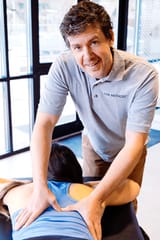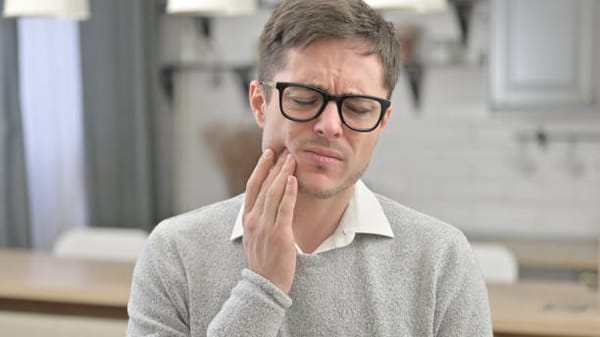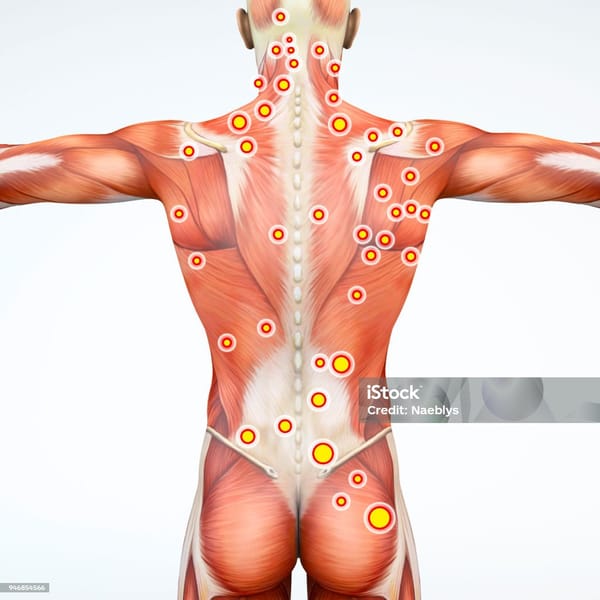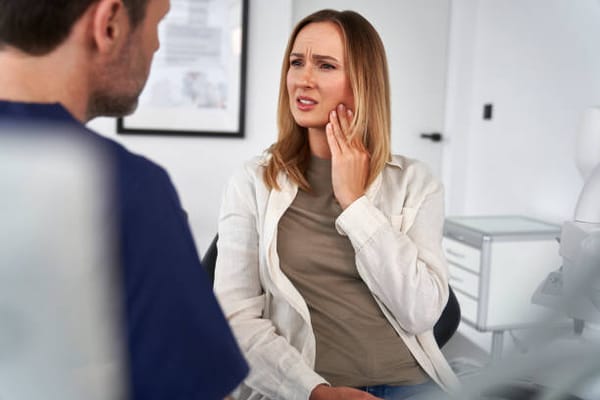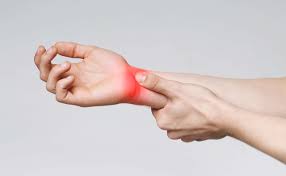
The Hidden Cost of Modernity: Role of Massage Therapy
Results showed that more than half of the patients reported significant pain reduction and physical and mental improvement, lasting up to 24 weeks.
Have you ever wondered how our modern, sedentary lifestyles contrast with the active lives of our ancestors? The differences are striking, and they significantly impact our physical health. In this post, we’ll explore the effects of these changes and how understanding our natural tendencies can help us improve our well-being today.
Asymmetry & Movement - How Our Ancestors Thrived
Most would agree that the human body is asymmetrical, much like the natural world it came from. Our bodies were designed to adapt to irregular, ever-changing surfaces and challenges. Historically, our ancestors thrived on uneven terrain, where each movement required adjustments and engaged various muscles, joints, and bones. This natural interaction kept their bodies resilient and robust.
Now, imagine sitting for countless hours at the edge of the African grasslands hundreds of years ago in front of a desk on a swivel chair. It wouldn't have been an efficient use of your time, would it? Our ancestors couldn't afford to sit for long periods, as we often need to do today in modern office jobs. Such prolonged inactivity would have been impossible and dangerous, neglecting hunting, gathering, and protecting the community. A sedentary lifestyle was non-existent in the distant past. Movement was necessary for survival, and our bodies evolved to thrive on regular physical activity.

Food insecurity was a constant threat, making continuous physical activity vital for survival. Failing to stay active could lead to severe consequences in such a setting, emphasizing the necessity of movement for survival. It's good they kept moving; otherwise, we'd still be stuck in the Stone Age, wondering what’s for dinner.
Travel was tricky back then, too, with unkept paths. People navigated through forests, rivers, and over rocky terrains to hunt and track wild game. Each journey demanded physical effort and constant adaptation, enhancing their strength and endurance. Our naturally asymmetrical bodies perfectly match the asymmetry of the natural world, allowing people to adapt to uneven terrains, which engage various muscles, joints, and bones with each step.

Minimal footwear and constant contact with the earth's diverse surfaces ensured flexibility and endurance. They walked, ran, hunted, fished, and worked with their hands, maintaining their physical health through continuous movement.
Living with natural asymmetry allowed our ancestors to flourish amid their environment's ever-changing surfaces and challenges. Their constant engagement with nature's demands ensured they remained strong, flexible, and adaptable. This characterized the lives of our ancient relatives, shaped by constant physical movement and the absence of symmetry in both the natural world and their bodies.
The Modern World: Symmetrical and Sedentary
In stark contrast, our modern world is characterized by symmetry and uniformity. Floors are flat and hard, beds are consistently soft, and most environments feature right angles and smooth surfaces. We spend long hours sitting for work and leisure, which has become a regular part of modern life. This leads to a lack of physical activity for which our bodies were not designed. This sedentary lifestyle increases stiffness, poor posture, and injury susceptibility.

Our modern footwear often cushions our feet excessively, preventing the natural engagement of muscles needed for stability and balance. Similarly, our uniformly soft beds do not provide the necessary feedback to maintain proper body alignment, leading to further physical issues.
Today's entertainment options exacerbate the problem. With endless TV shows, movies, and online videos, we spend most of our days sitting. Even commuting involves prolonged sitting, further disconnecting us from our natural movement patterns.


Moreover, we have more processed food and sugar than our ancestors could have imagined possible. This abundance and our sedentary lifestyles have led to higher death rates. Being overweight adds extra stress to our bodies, worsening physical imbalances and increasing the risk of health issues like diabetes, heart conditions, high blood pressure, and premature wear and tear on muscles and joints.
Disrupting the Natural Balance
When we force our asymmetrical bodies into the rigid, symmetrical structures of the man-made world, we break the natural harmony, decreasing overall physical health and vitality. Our bodies and the natural world are inherently asymmetrical, designed for constant movement and adaptation. The natural state of constant movement we discussed earlier promotes flexibility, strength, and resilience. However, the modern world's symmetry and sedentary lifestyle disrupt this balance, causing various physical issues such as muscle imbalances, joint stiffness, poor posture, discomfort, and pain.
Insights from a New Study on Massage Therapy
A study from Indiana University-Purdue University, published in the journal Pain Medicine, evaluated the effectiveness of personalized medical massage programs for people with persistent pain. The study involved 104 participants who received a ten-session massage program over 12 weeks. Therapists used various techniques, including Swedish massage, myofascial, sports massage techniques, and trigger point therapy, tailored to the patient's needs.
Results showed that more than half of the patients reported significant pain reduction and physical and mental improvement, lasting up to 24 weeks. Older adults experienced excellent outcomes, while those who were overweight did not see the benefits persist. This study highlights what our bodies already seem to know: massage therapy is versatile and effective in addressing various physical conditions and helping our asymmetrical bodies cope with the demands of the modern symmetrical world.

Massage therapy alleviates pain and stiffness and promotes general health by reconnecting us with our bodies' dynamic, asymmetrical nature. Working on the overcompensating muscles helps to release tension, improve circulation, and restore natural movement patterns. By incorporating massage into our routines, we counteract the adverse effects of prolonged sitting and artificial environments. Regular massage alleviates physical discomfort and supports psychological and emotional health, underscoring the profound impact of maintaining a balanced, active lifestyle in harmony with our natural design.

While we don't want to revert to the past, where life was undeniably difficult, the physical demands of that time made our bodies strong, adaptable, and dynamic. Returning to those times is impractical (and who wants to give up Wi-Fi?), but we can learn from the past to improve our health and well-being today. By incorporating principles of movement and natural interaction with our environment, along with modern practices like massage therapy, we can create a balanced approach to maintaining our physical and mental health.
Disclaimer: Please note that at Iler Method® Therapy, we specialize in massage therapy and related techniques. All clients must understand that we are not medical professionals, and our services should not be seen as a substitute for medical advice, diagnosis, or treatment. Our practices are designed to support and complement your overall health, but they do not replace professional medical consultation when needed.

